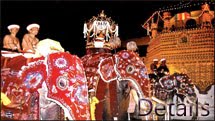 The game consists of two disciplines, Volleyball and Beach Volleyball, and is a dynamic sport played by two teams on a playing court divided by a net. Continuous rally scoring maintains spectator excitement and game excitement.
The game consists of two disciplines, Volleyball and Beach Volleyball, and is a dynamic sport played by two teams on a playing court divided by a net. Continuous rally scoring maintains spectator excitement and game excitement.
Volleyball is played indoors with six players per side. Beach Volleyball is played outdoors on sand with two players per side.
New rules, an attractive look, "libero" defensive players, vibrant ball colours and interactive coaching have brought a new era to the game, making it more dramatic and entertaining than ever before.
ImageThere are different versions of Volleyball available for specific circumstances in order to offer the versatility of the game to everyone. The object of the game is to send the ball over the net in order to ground it on the opponents' court and to prevent the same effort by the opponents.
The team has three hits for returning the ball (in addition to the block contact). The ball is put in play with a service: hit by the server over the net to the opponents. The rally continues until the ball is grounded on the playing court, goes "out" or a team fails to return it properly.
In Volleyball, the team winning a rally scores a point (the rally point system). When the receiving team wins a rally, it gains a point and the right to serve, and its players rotate one position clockwise.
scour- volleyballsrilanka.org













.jpg)
.jpg)
.jpg)
.jpg)
.jpg)